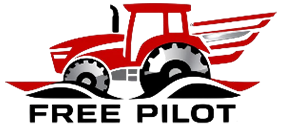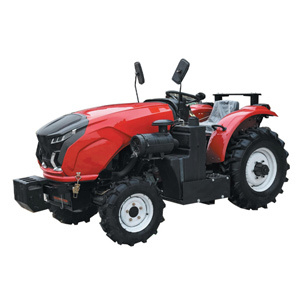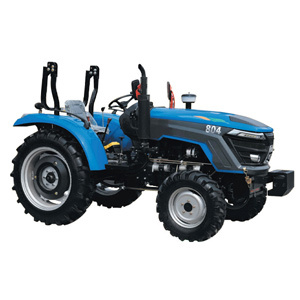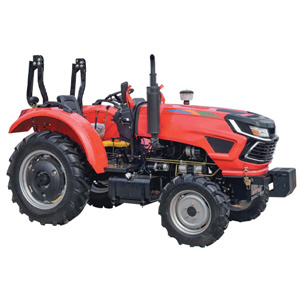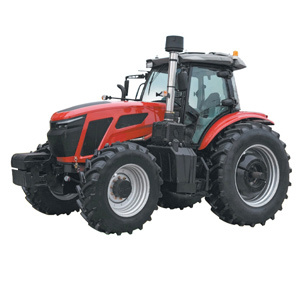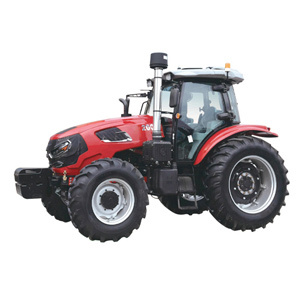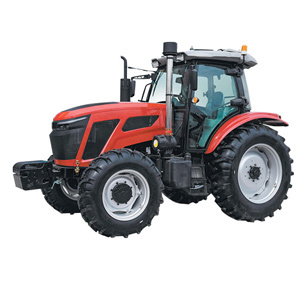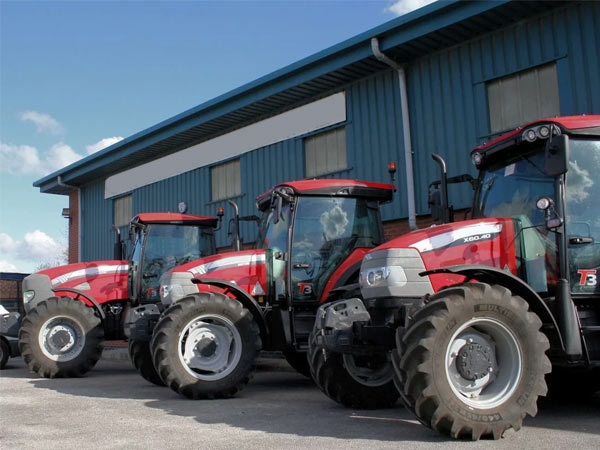Providing you with a one-stop solution for tractors
More Horsepower is Better? How to Choose the Perfect Tractor Based on PTO Power and Traction
Release time:
2025-10-28
When buying a new tractor, the engine horsepower (HP) often takes center stage. It's a simple, impressive number. However, choosing a tractor on horsepower alone is like buying a truck based only on its top speed – it ignores the real-world capability that matters most. For ultimate efficiency and value, two other specifications are far more critical: PTO Power and Traction. Understanding these will guide you to the right tractor for your needs, potentially saving you from overspending on unnecessary power or underestimating your requirements.
1. The Misleading Allure of Engine Horsepower
Engine horsepower, also known as gross horsepower or rated engine HP, is the theoretical maximum power produced by the engine itself. It's a measure of potential. However, a significant portion of this power is consumed internally just to run the tractor – by the cooling fan, hydraulic pumps, alternator, and transmission. It never reaches the implements that do the actual work.
The Pitfall: A tractor with a high engine HP might look powerful on paper, but if its power delivery systems are inefficient, you're paying for fuel to power the tractor itself, not your work.
2. PTO Power: The True Measure of Implement Performance
The Power Take-Off (PTO) horsepower is the usable power available at the tractor's PTO shaft to drive attached implements. This is the power that runs your rotary tiller, baler, forage harvester, and post-hole digger.
Why It's Crucial: If your primary work involves PTO-driven implements, the PTO HP is your most important specification.
How to Use This Metric:
Check Your Implement Requirements: Every PTO-driven implement has a minimum PTO horsepower requirement for safe and efficient operation. Check the manuals for your largest or most demanding implements (e.g., a large square baler or a heavy-duty manure spreader).
Match the Tractor: Choose a tractor whose PTO HP meets or slightly exceeds this requirement. A good rule of thumb is that PTO HP is typically about 85-90% of the engine's rated HP. This is the number that ensures your mower cuts thick grass without stalling or your baler produces dense, uniform bales.
3. Traction: The Art of Putting Power to the Ground
Traction is what translates engine power into pulling force. You can have immense PTO power, but if your tractor's wheels just spin, it's useless for draft work like plowing, disking, or pulling a grain cart.
The Key to Traction: Weight & Design. Traction is determined by:
Tractor Weight: This is the single most important factor. A heavier tractor has a better grip.
Drivetrain (2WD vs. MFWD/4WD): Mechanical Front-Wheel Drive (MFWD) provides significantly more pulling power and stability, especially in muddy or hilly conditions.
Tire Type and Size: Larger, wider tires with the correct tread (e.g., R1 Ag for fields) provide a larger contact patch and better grip.
How to Assess Traction for Your Needs:
For Heavy Draft Work (Plowing, Pulling): You need a heavy, robust chassis and MFWD/4WD. Look for a model known for its strong build and high drawbar pull capability. Don't be afraid to ask about ballasting options (liquid in tires, wheel weights, front weights) to maximize traction.
For Mixed/Light Loads (Loader Work, Transport): A lighter tractor with MFWD may be sufficient and more fuel-efficient. The priority here is a good power-to-weight ratio and agility.
The Perfect Choice Scenarios: Putting It All Together
Let's see how PTO Power and Traction guide you in different situations:
Scenario A: The Livestock Farmer
Primary Tasks: Running a large TMR mixer, operating a manure spreader, and powering a silage blower.
Analysis: These are all PTO-intensive tasks. The engine and PTO must deliver consistent power under high load for hours.
Your Choice: Prioritize a tractor with high PTO Horsepower that matches your most demanding implement. A standard utility tractor with a robust PTO system is ideal. Extreme weight is less critical.
Scenario B: The Cash Crop Farmer
Primary Tasks: Primary tillage (moldboard plowing), pulling a heavy disc harrow, and carting grain during harvest.
Analysis: These are all high-traction, draft-intensive tasks. The goal is to pull wide and heavy implements without excessive wheel slip.
Your Choice: Prioritize Traction. Look for a heavier row-crop tractor with a strong chassis, MFWD/4WD as standard, and excellent weight ballasting capabilities. High PTO power is a secondary concern unless you also run large PTO implements.
Conclusion: Look Beyond the Brochure
Stop asking, "How many horsepower?" and start asking:
"What is its PTO Horsepower, and does it match my implements?"
"Is this tractor built with enough weight and the right drivetrain for my primary pulling tasks?"
By shifting your focus from raw engine power to these two functional metrics, you move from being a mere buyer to an informed farm manager. You'll select a tractor that is not just powerful on paper, but perfectly powerful and efficient for your specific fields and tasks.
RELATED BLOG
